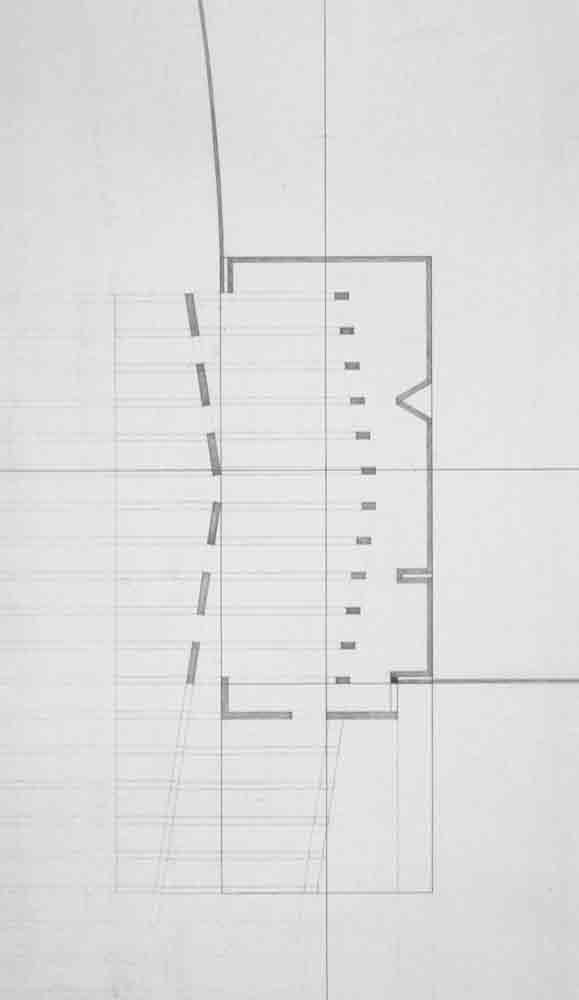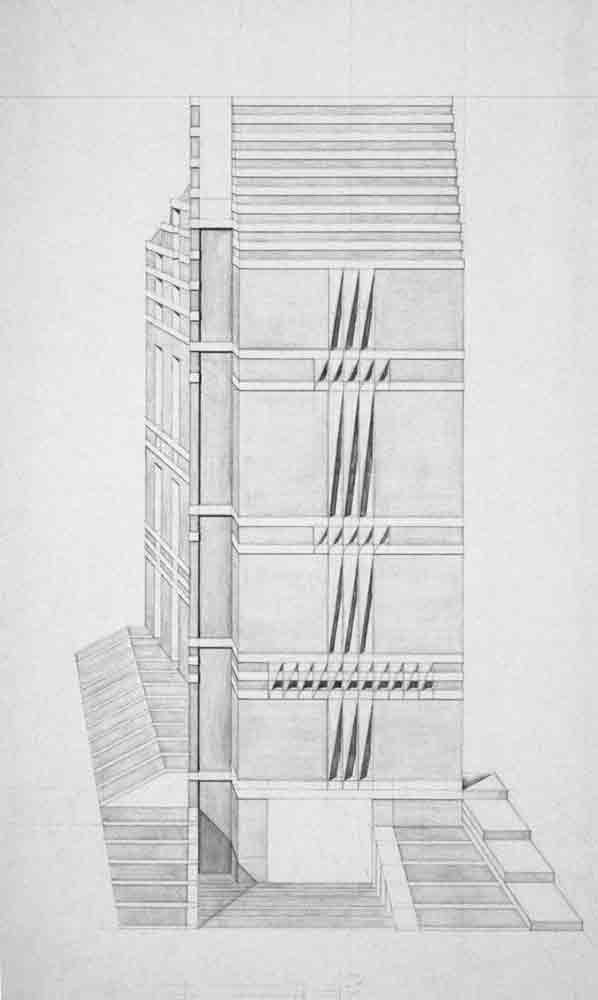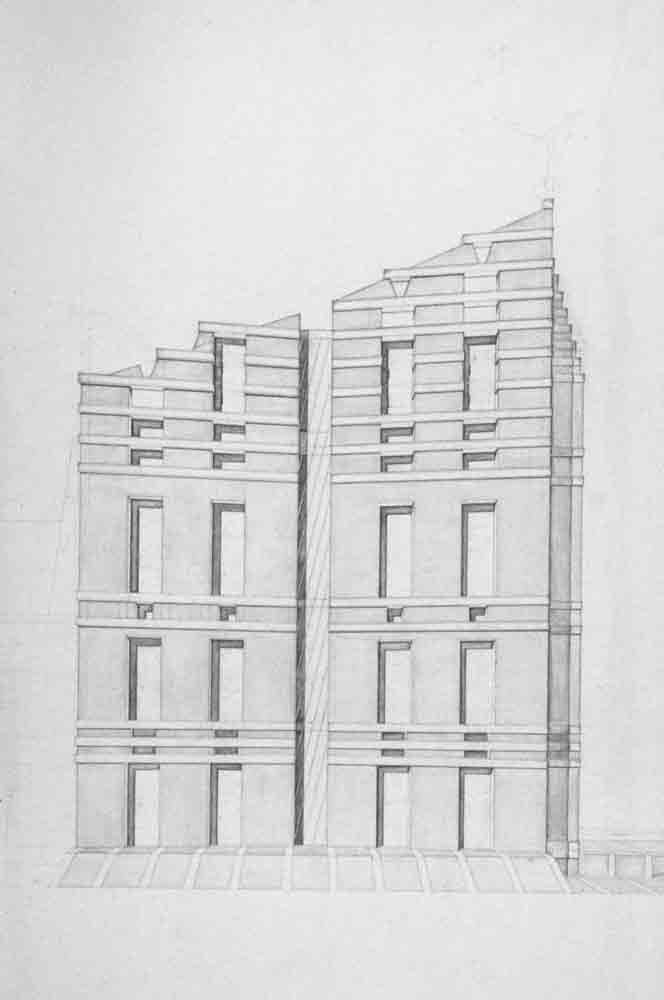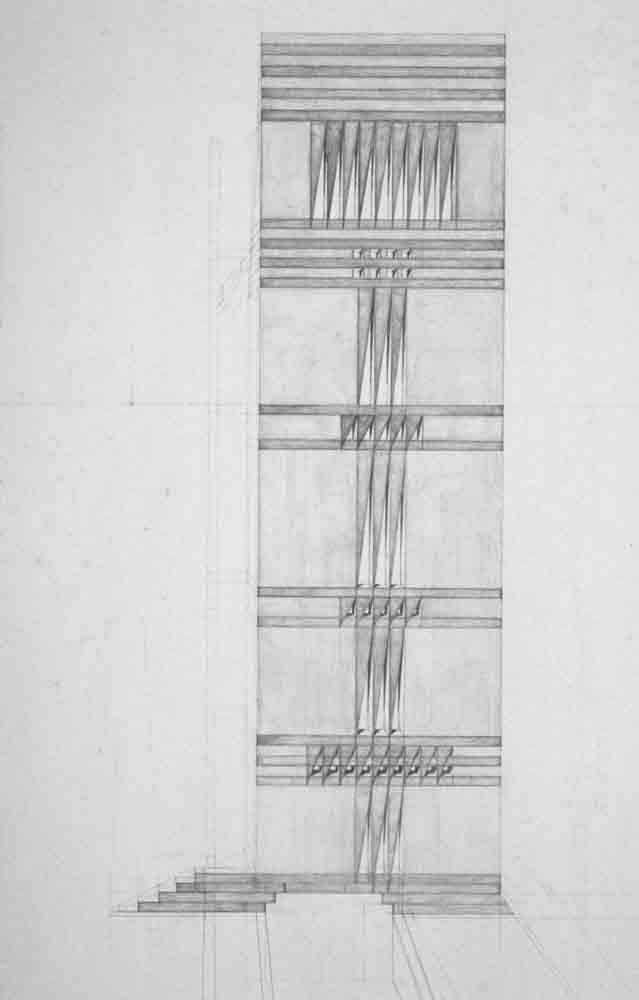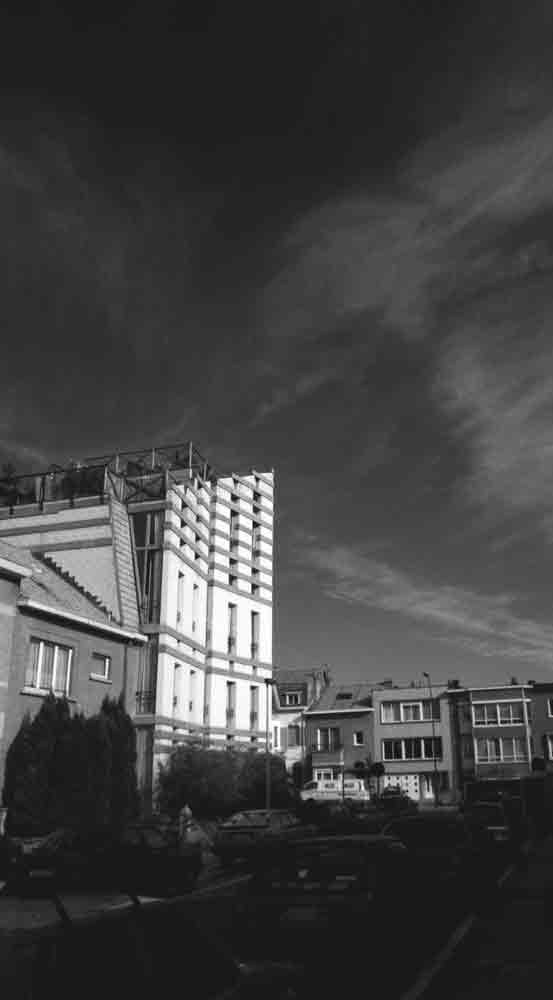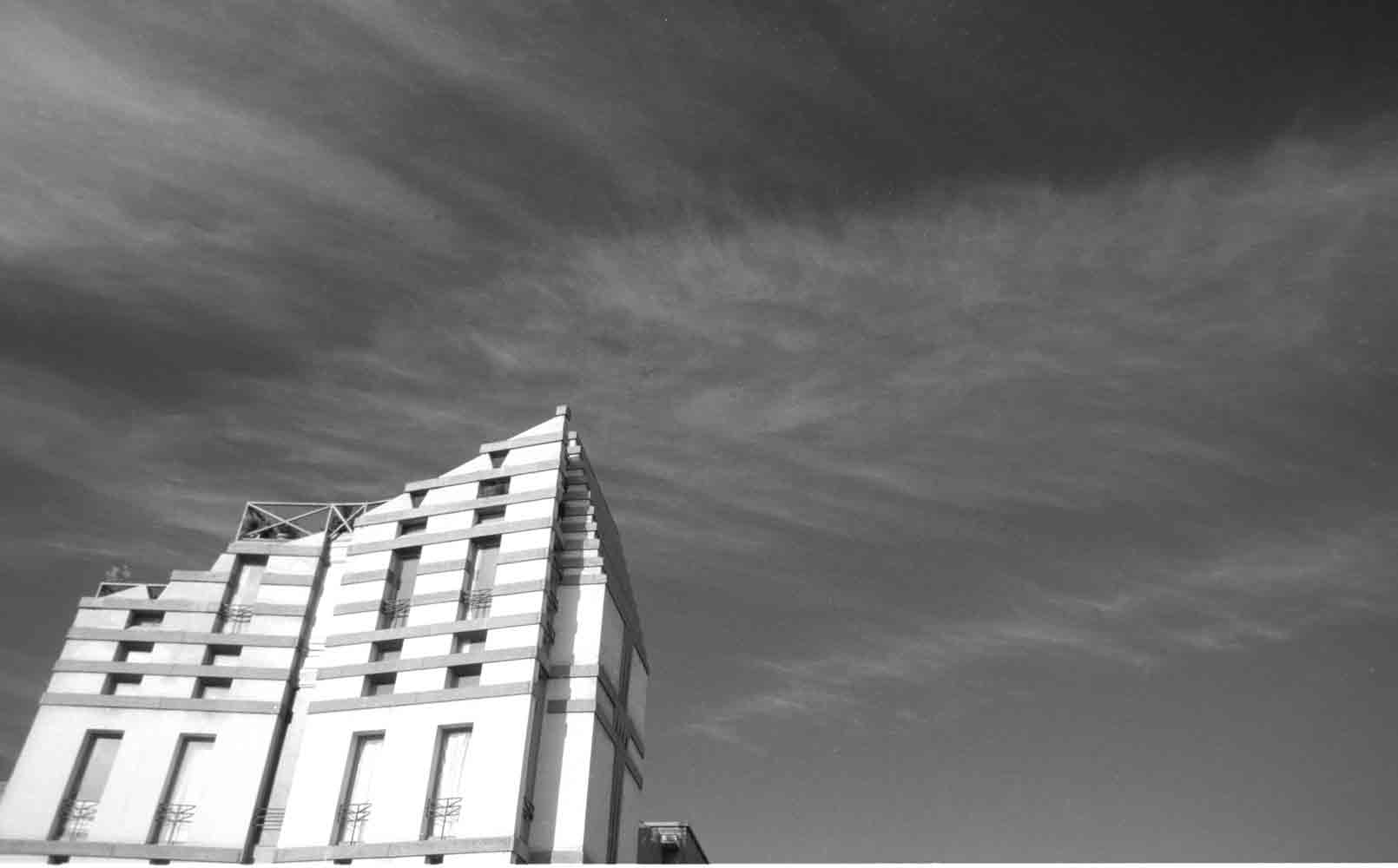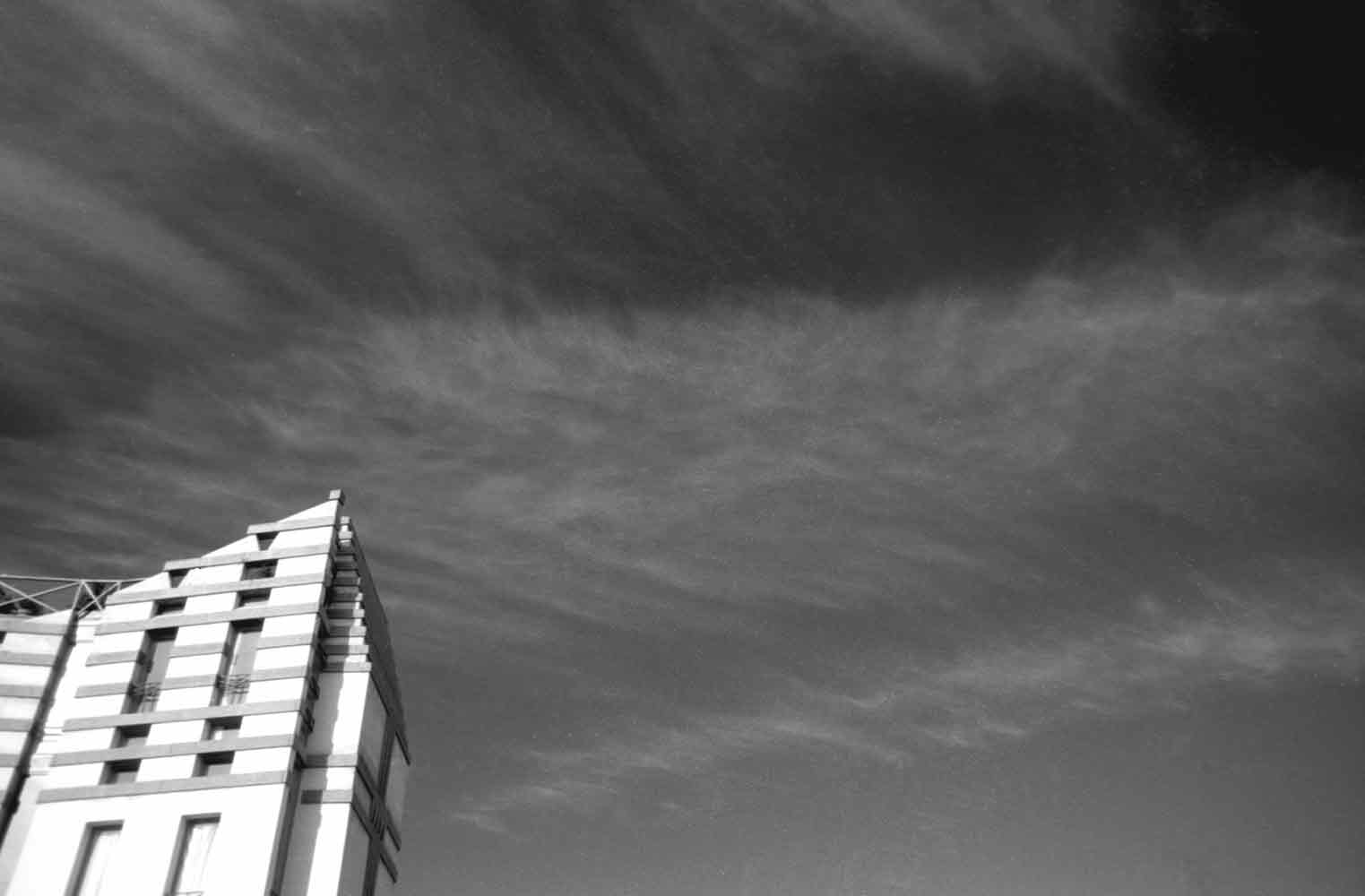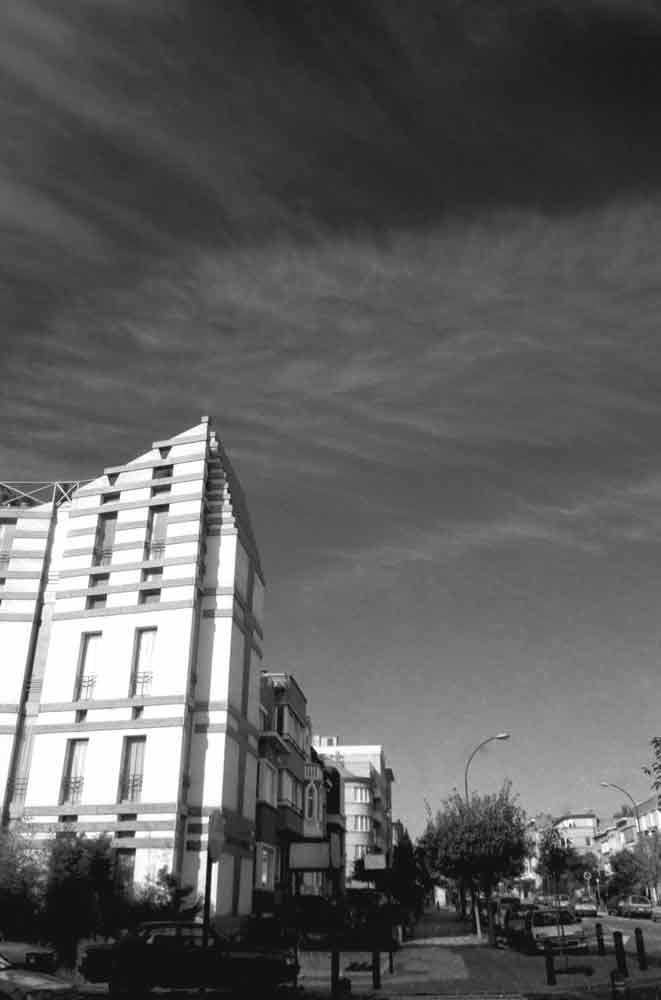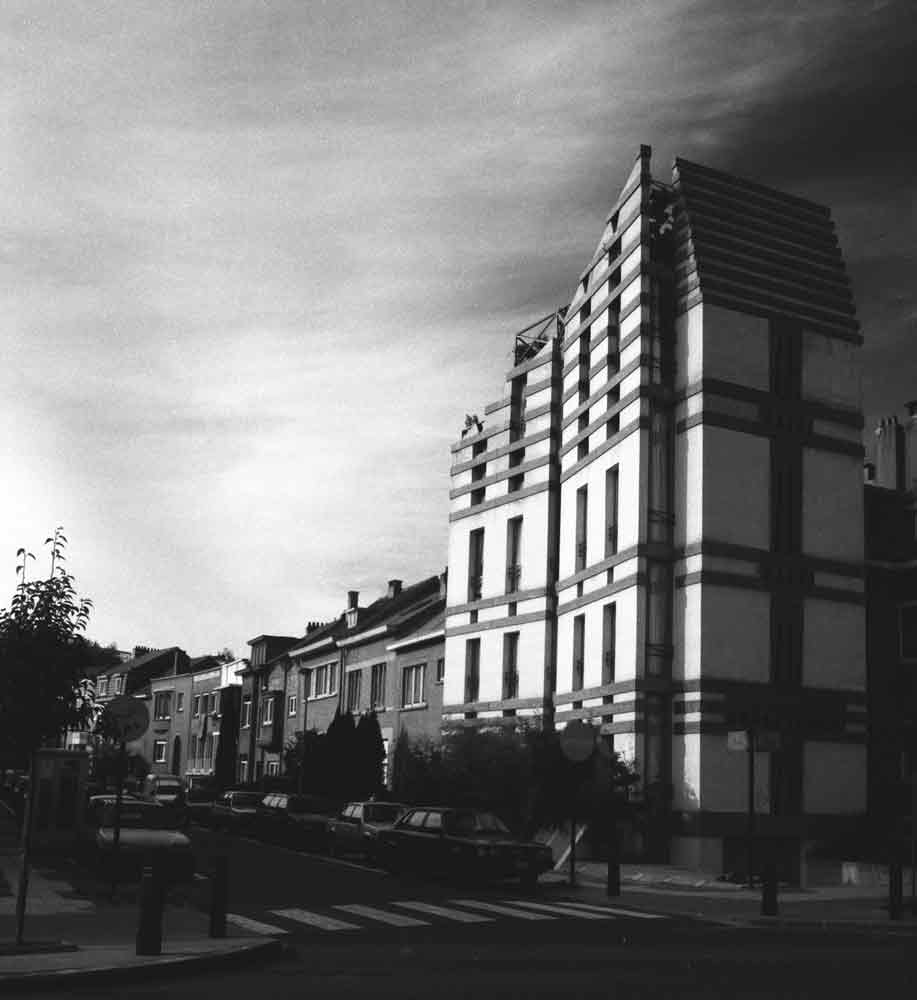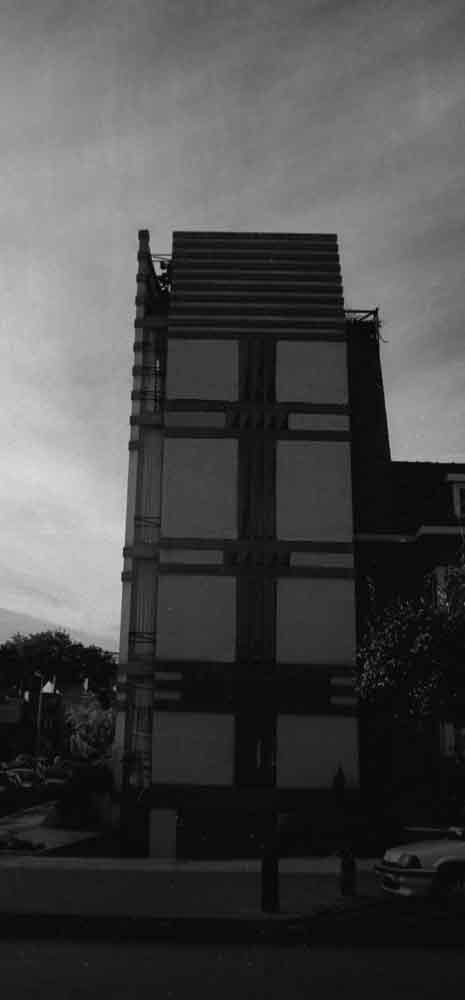1992 Audergem
A building on the corner of two streets.....
Very few elements or instruments of architecture.
One immediately sees a simple and clear layout.
What do we see?
In plan:
A right corner....
indicating two directions.
A rhythm both inside and outside,
seeming to come from an outer infinity,
ending and establishing itself materially
in the void of the corner.
One could think the opposite.
It would be even better.
Think that from a few oriented material points
-these are rectangles-
arranged in the void of this corner which becomes a background
and establishing a distance or a simple measure,
stretch out lines towards infinity
in front of a background of the corner.
These points are not at the same distance from the background.
Their alignments institute a fold.
That is, a double oblicity.
Then,
at a clear distance from the alignment of these points,
2 times 3 lines aligned like these points.
Between these points and these lines
there does not seem to be a pure void.
There seems to be a void with a law :
the law of the same distance
between these points and these lines.
A vacuum provided with a law is a space.
And we note that this space
between these points and lines
is the only space of this project.
A virtually infinite space
but beginning in the void of this corner.
This edifice is thus made from a beginning.
And remains there.
And it is a beginning
connoted by an infinity.
We note that this space
establishes itself in this corner
but at the same time seems to leave it...
All of this through the double oblicity.
We know that the oblique
does not go towards itself.
It goes towards the other.
The other here is the infinite...
Of which this project is a background.
A background that
on the small side of the building
the face in the shape of a niche
holds
for what is physical.
It is therefore clear that
there is a finite
which is part of an infinite
and that they are therefore not in opposition
We can see that there is an interior
and
that there is an exterior
but they are not in opposition
It is clear that
that this building has faces
but these do not enclose
the depth of the building.
We can see that the faces
are not attached to the building
to close it in on itself.
It is therefore clear that
the faces and the depth of the building
are not in opposition.
The structure of this building
is therefore in
non-opposition between finite and infinite,
non-opposition between interior and exterior,
non-opposition between face and depth.
This triple non-opposition
is also that of the mental organisation
of the anthrope-subject.
(Who is not the humanist 'human being'
of the old idealist world
of the Renaissance and post-Renaissance world
which still rages today)
It is for this anthrope-subject
that the spatial structure of this building
is relevant for this anthrope-subject.
*
The same thing can be seen in elevation.
We immediately note that
the elevation of this building
is very constructed.
and that it goes towards an infinite
not being able to reach it
the two faces (image 3)
are carved with an oblique gesture.
They do not stop there.
Virtually they go to infinity.
They are therefore also unfinished.
And leave behind them
the infinite sky in the building.
There too, therefore, in elevation,
we note the triple non opposition
between finite and infinite,
between interior and exterior,
between face and depth.
*
This triple non-opposition
is that of the mental organisation
of a non-individualistic subject
not central to itself
which does not exist a priori
and is the crossing of others.
A subject that lives in
non-opposition between finite and infinite,
non-opposition between inside and outside,
non-opposition between face and depth.
This subject...
we cannot put him in a small closed world.
His world is in-finite infinite.
Like this architecture
of its commencement.
That is all there is to say
essentially
about the architecture of this building.



